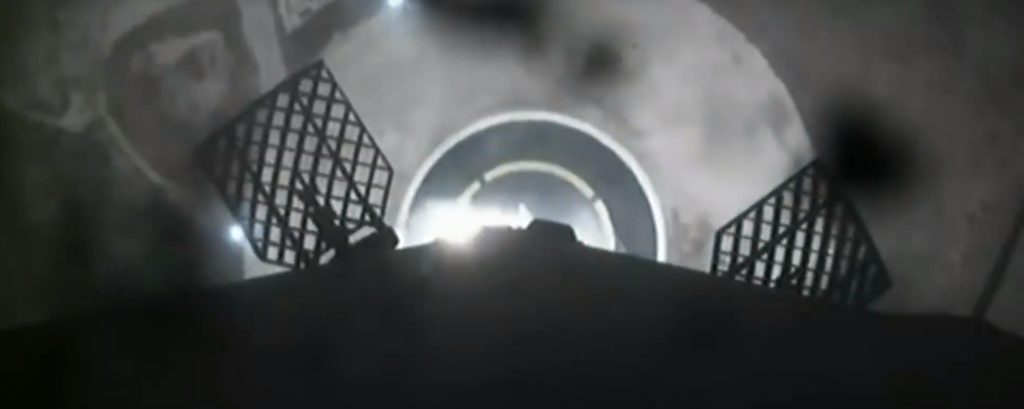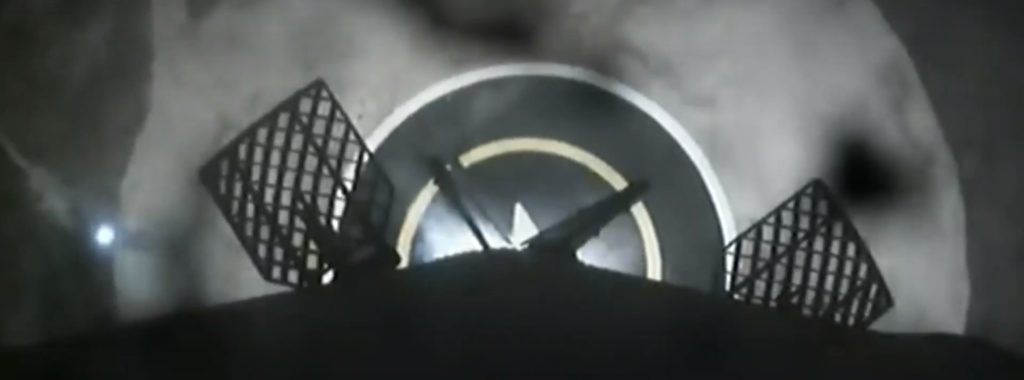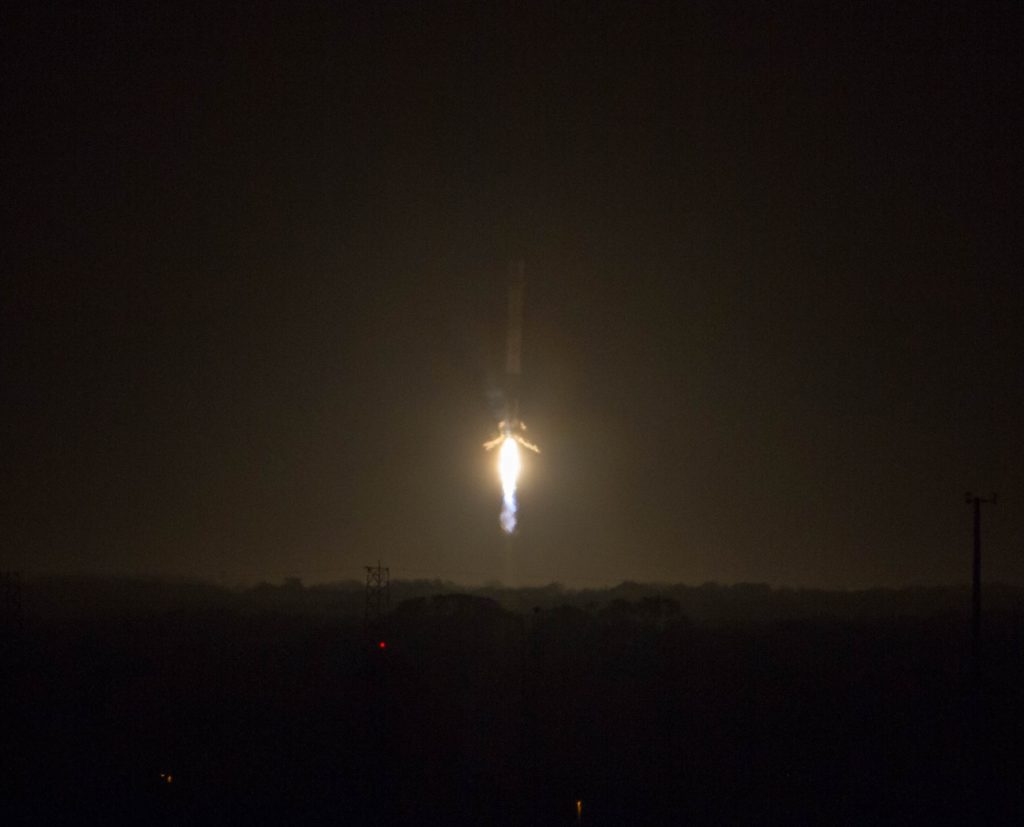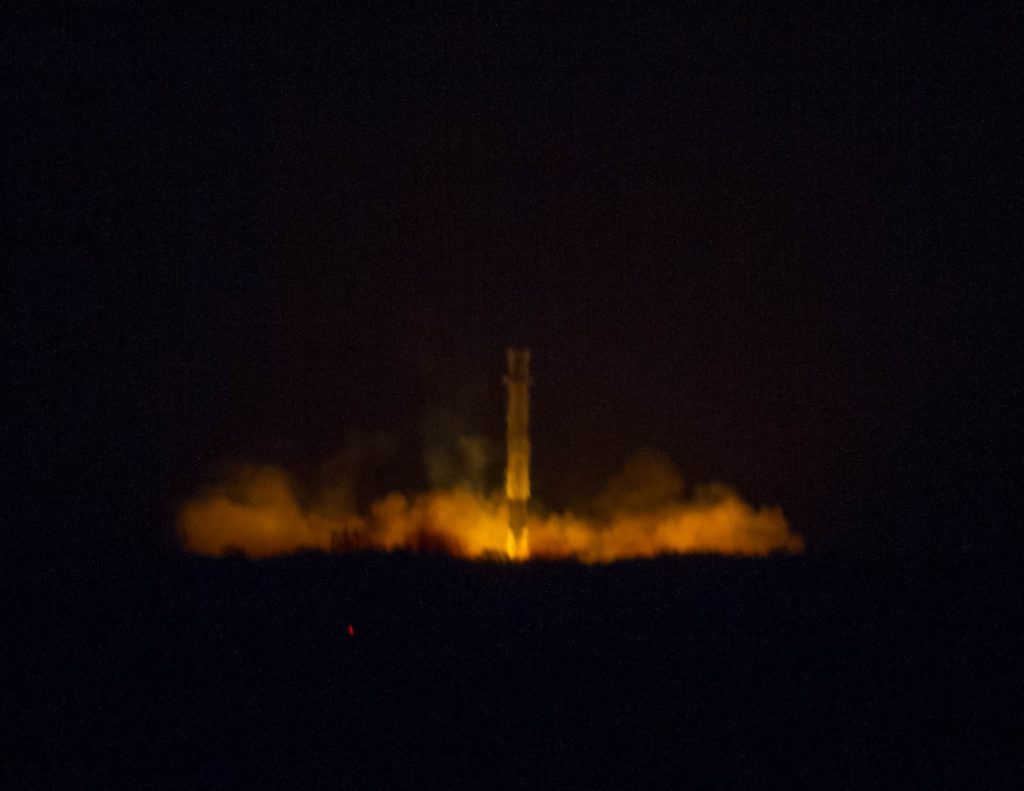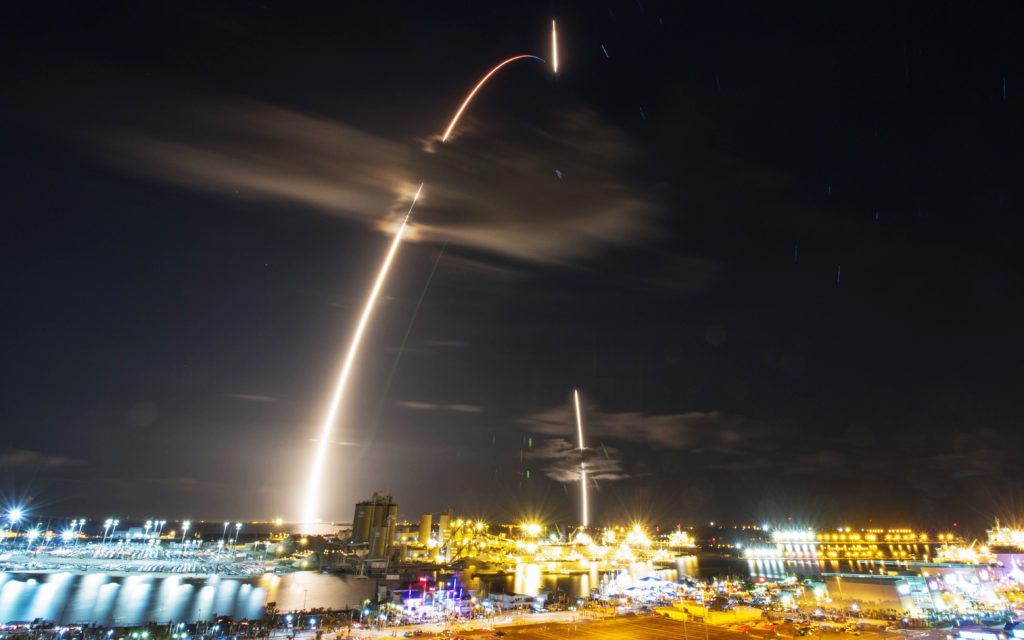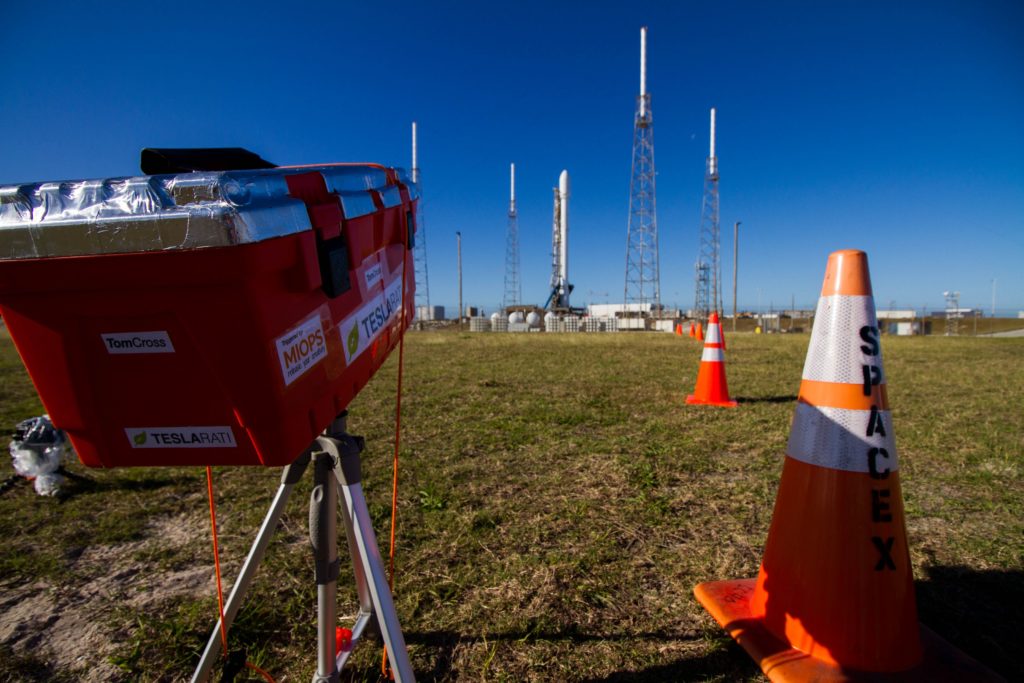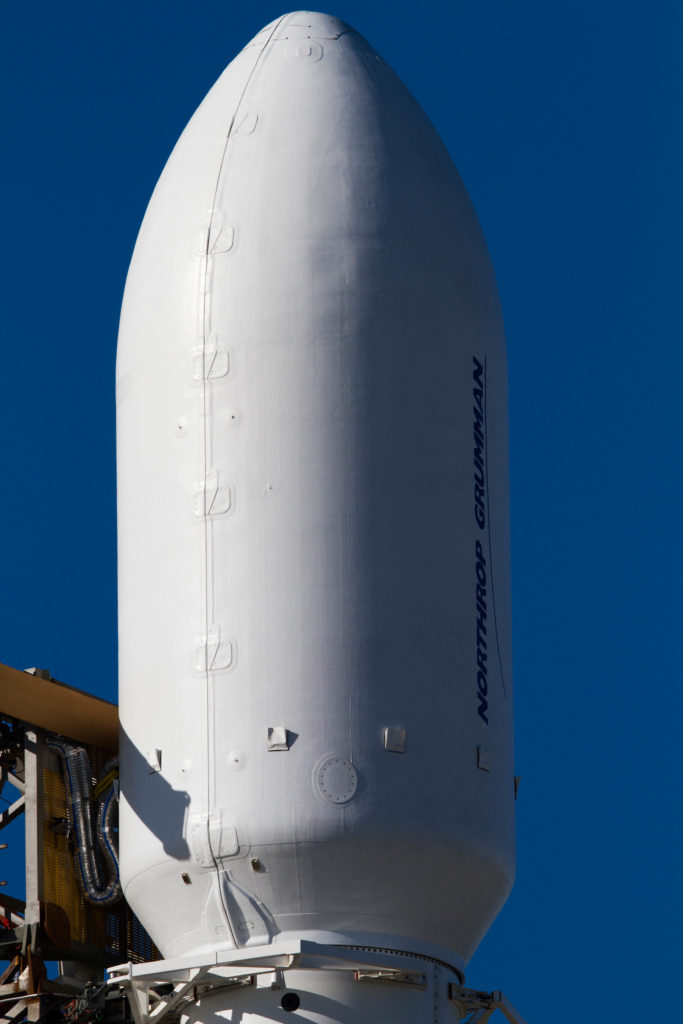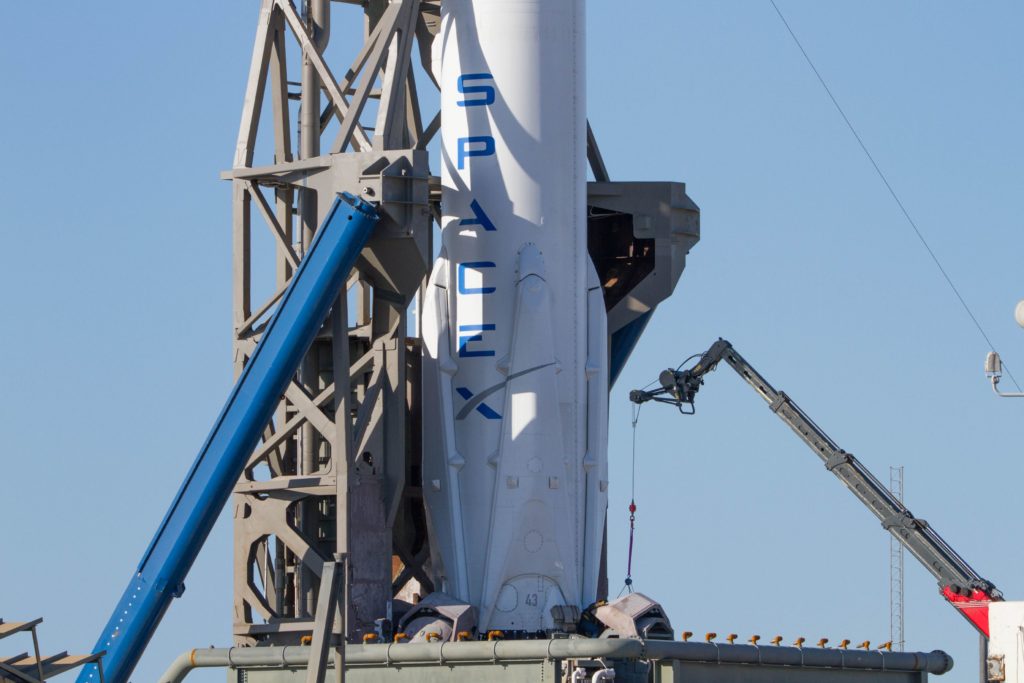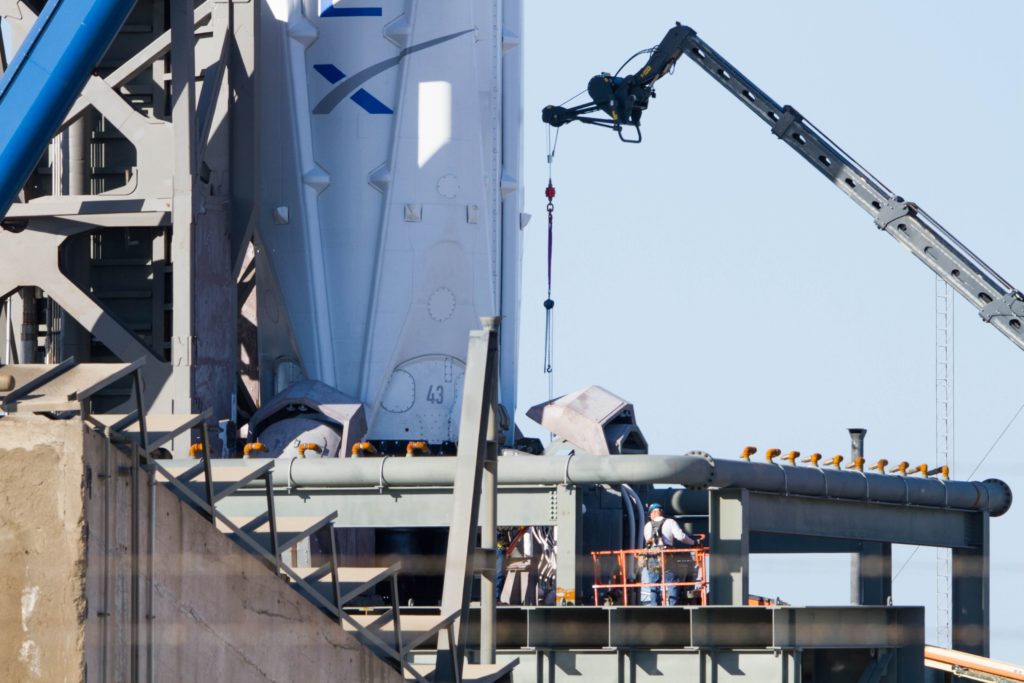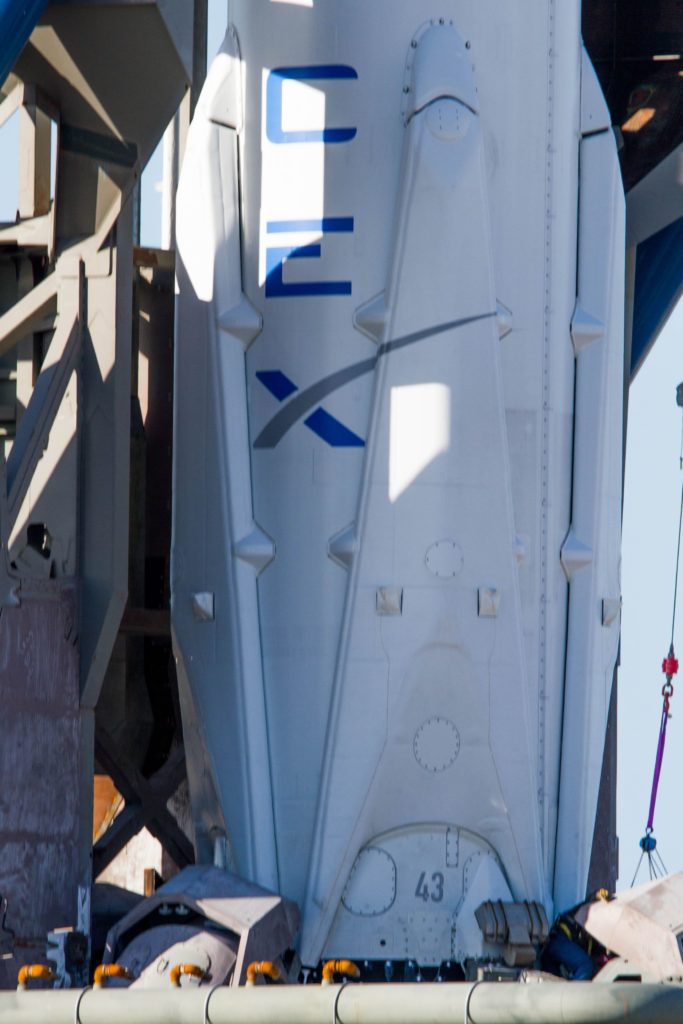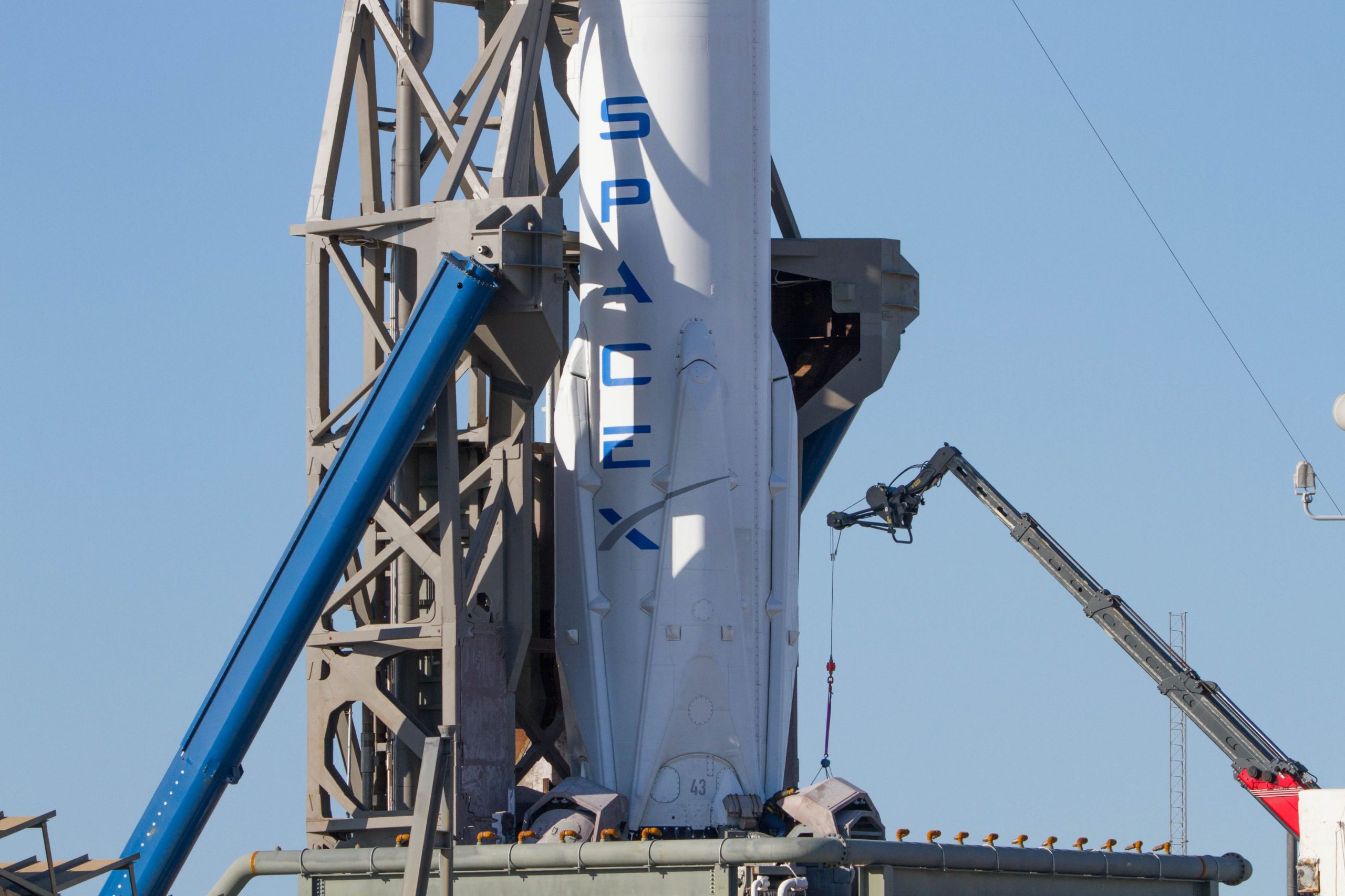

News
SpaceX’s first launch and landing of 2018 a success [gallery]
Update: While live coverage of the mission ended immediately after, SpaceX has nailed their first Falcon 9 booster recovery of the new year after Zuma’s Core 1043 returned to Landing Zone 1 at Cape Canaveral Air Force Station. The landed booster will undoubtedly see another flight (or two) in the near future after a relatively low-energy mission to low Earth orbit, decreasing the level of harsh heating experienced. While no additional information will likely be shared, it is assumed that Falcon 9’s second stage successfully inserted the Zuma payload into its desired orbit, ending SpaceX’s first mission of 2018.
Up next for SpaceX is an historic wet dress rehearsal and static fire of the inaugural Falcon Heavy, currently expected to occur sometime next week, with launch before the end of January.
- Nearing LZ-1…
- and Falcon 9 1043’s landing legs deploy before a successful landing. (SpaceX)
Teslarati’s launch photographer Tom Cross was also able to snag some great shots of the booster’s recovery at LZ-1.
- (Tom Cross/Teslarati)
- (Tom Cross/Teslarati)
- (Tom Cross/Teslarati)
- A composite long exposure showing the launch, landing, and second stage burns during the Zuma mission. (Tom Cross/Teslarati)
Aiming to lift off at 5pm PST/8pm EST later today, the Northrop Grumman-labelled Zuma mission is once again at the launch pad and ready to reach orbit aboard a SpaceX Falcon 9. Weather is currently 80% favorable for the mysterious mission, boding well for a launch sometime within the two hour window allotted to the satellite.

A charred log at SpaceX’s LC-40 pad serves as a reminder of their Amos-6 failure and the difficulties of orbital rocketry. (Tom Cross/Teslarati)
After issues were discovered in one of SpaceX’s payload fairings, Zuma was delayed from its original launch window in mid-November to January 2018, and was also moved from Launch Complex 39A to LC-40, just south of Kennedy Space Center. With its rescheduled ETA, SpaceX was looking to launch on January 4th, but a combination of undesirable upper-level winds and an opportunity to test the rocket and pad systems in frigid Florida weather conspired to delay the mission another handful of days to January 6 and finally January 7, today.
The apparently lightweight and highly secretive payload will mean that coverage of the payload and upper stage will sadly end immediately after the first stage separates. On the plus side, this means that the Falcon 9 booster’s return to Landing Zone 1 (LZ-1) will be the sole focus of SpaceX’s live coverage, likely culminating in some captivating footage, partially thanks to the beautiful, cloudless weather currently blessing Cape Canaveral. While the secretive nature of this launch will likely mean that no information will be publicly released about the mission of the Zuma satellite(s), a number of skilled astrophotographers will do their best to catalog and track the mission once it reaches orbit, just as they did with SpaceX’s intriguingly similar NROL-76 launch for the US National Reconnaissance Office in 2017.
- Tom Cross took a number of awesome photos earlier this morning (January 7) as Zuma prepares for launch. (Tom Cross/Teslarati)
- (Tom Cross/Teslarati)
- (Tom Cross/Teslarati)
- (Tom Cross/Teslarati)
- (Tom Cross/Teslarati)
- (Tom Cross/Teslarati)
In the meantime, our intrepid launch photographer Tom Cross has once again set up cameras to capture SpaceX’s delay-beset launch of Zuma, this time at the company’s newly reactivated LC-40 pad. With new, powerful lenses in tow, he’s been able to capture some gorgeous detail shots of SpaceX’s beautifully complex pad systems and rocket hardware. Follow along live on Instagram to get a behind-the-scenes view of SpaceX’s first launch of 2018.
SpaceX’s own official livestream can be found below.

Elon Musk
Starlink passes 9 million active customers just weeks after hitting 8 million
The milestone highlights the accelerating growth of Starlink, which has now been adding over 20,000 new users per day.

SpaceX’s Starlink satellite internet service has continued its rapid global expansion, surpassing 9 million active customers just weeks after crossing the 8 million mark.
The milestone highlights the accelerating growth of Starlink, which has now been adding over 20,000 new users per day.
9 million customers
In a post on X, SpaceX stated that Starlink now serves over 9 million active users across 155 countries, territories, and markets. The company reached 8 million customers in early November, meaning it added roughly 1 million subscribers in under seven weeks, or about 21,275 new users on average per day.
“Starlink is connecting more than 9M active customers with high-speed internet across 155 countries, territories, and many other markets,” Starlink wrote in a post on its official X account. SpaceX President Gwynne Shotwell also celebrated the milestone on X. “A huge thank you to all of our customers and congrats to the Starlink team for such an incredible product,” she wrote.
That growth rate reflects both rising demand for broadband in underserved regions and Starlink’s expanding satellite constellation, which now includes more than 9,000 low-Earth-orbit satellites designed to deliver high-speed, low-latency internet worldwide.
Starlink’s momentum
Starlink’s momentum has been building up. SpaceX reported 4.6 million Starlink customers in December 2024, followed by 7 million by August 2025, and 8 million customers in November. Independent data also suggests Starlink usage is rising sharply, with Cloudflare reporting that global web traffic from Starlink users more than doubled in 2025, as noted in an Insider report.
Starlink’s momentum is increasingly tied to SpaceX’s broader financial outlook. Elon Musk has said the satellite network is “by far” the company’s largest revenue driver, and reports suggest SpaceX may be positioning itself for an initial public offering as soon as next year, with valuations estimated as high as $1.5 trillion. Musk has also suggested in the past that Starlink could have its own IPO in the future.
News
NVIDIA Director of Robotics: Tesla FSD v14 is the first AI to pass the “Physical Turing Test”
After testing FSD v14, Fan stated that his experience with FSD felt magical at first, but it soon started to feel like a routine.

NVIDIA Director of Robotics Jim Fan has praised Tesla’s Full Self-Driving (Supervised) v14 as the first AI to pass what he described as a “Physical Turing Test.”
After testing FSD v14, Fan stated that his experience with FSD felt magical at first, but it soon started to feel like a routine. And just like smartphones today, removing it now would “actively hurt.”
Jim Fan’s hands-on FSD v14 impressions
Fan, a leading researcher in embodied AI who is currently solving Physical AI at NVIDIA and spearheading the company’s Project GR00T initiative, noted that he actually was late to the Tesla game. He was, however, one of the first to try out FSD v14.
“I was very late to own a Tesla but among the earliest to try out FSD v14. It’s perhaps the first time I experience an AI that passes the Physical Turing Test: after a long day at work, you press a button, lay back, and couldn’t tell if a neural net or a human drove you home,” Fan wrote in a post on X.
Fan added: “Despite knowing exactly how robot learning works, I still find it magical watching the steering wheel turn by itself. First it feels surreal, next it becomes routine. Then, like the smartphone, taking it away actively hurts. This is how humanity gets rewired and glued to god-like technologies.”
The Physical Turing Test
The original Turing Test was conceived by Alan Turing in 1950, and it was aimed at determining if a machine could exhibit behavior that is equivalent to or indistinguishable from a human. By focusing on text-based conversations, the original Turing Test set a high bar for natural language processing and machine learning.
This test has been passed by today’s large language models. However, the capability to converse in a humanlike manner is a completely different challenge from performing real-world problem-solving or physical interactions. Thus, Fan introduced the Physical Turing Test, which challenges AI systems to demonstrate intelligence through physical actions.
Based on Fan’s comments, Tesla has demonstrated these intelligent physical actions with FSD v14. Elon Musk agreed with the NVIDIA executive, stating in a post on X that with FSD v14, “you can sense the sentience maturing.” Musk also praised Tesla AI, calling it the best “real-world AI” today.
News
Tesla AI team burns the Christmas midnight oil by releasing FSD v14.2.2.1
The update was released just a day after FSD v14.2.2 started rolling out to customers.

Tesla is burning the midnight oil this Christmas, with the Tesla AI team quietly rolling out Full Self-Driving (Supervised) v14.2.2.1 just a day after FSD v14.2.2 started rolling out to customers.
Tesla owner shares insights on FSD v14.2.2.1
Longtime Tesla owner and FSD tester @BLKMDL3 shared some insights following several drives with FSD v14.2.2.1 in rainy Los Angeles conditions with standing water and faded lane lines. He reported zero steering hesitation or stutter, confident lane changes, and maneuvers executed with precision that evoked the performance of Tesla’s driverless Robotaxis in Austin.
Parking performance impressed, with most spots nailed perfectly, including tight, sharp turns, in single attempts without shaky steering. One minor offset happened only due to another vehicle that was parked over the line, which FSD accommodated by a few extra inches. In rain that typically erases road markings, FSD visualized lanes and turn lines better than humans, positioning itself flawlessly when entering new streets as well.
“Took it up a dark, wet, and twisty canyon road up and down the hill tonight and it went very well as to be expected. Stayed centered in the lane, kept speed well and gives a confidence inspiring steering feel where it handles these curvy roads better than the majority of human drivers,” the Tesla owner wrote in a post on X.
Tesla’s FSD v14.2.2 update
Just a day before FSD v14.2.2.1’s release, Tesla rolled out FSD v14.2.2, which was focused on smoother real-world performance, better obstacle awareness, and precise end-of-trip routing. According to the update’s release notes, FSD v14.2.2 upgrades the vision encoder neural network with higher resolution features, enhancing detection of emergency vehicles, road obstacles, and human gestures.
New Arrival Options also allowed users to select preferred drop-off styles, such as Parking Lot, Street, Driveway, Parking Garage, or Curbside, with the navigation pin automatically adjusting to the ideal spot. Other refinements include pulling over for emergency vehicles, real-time vision-based detours for blocked roads, improved gate and debris handling, and Speed Profiles for customized driving styles.
